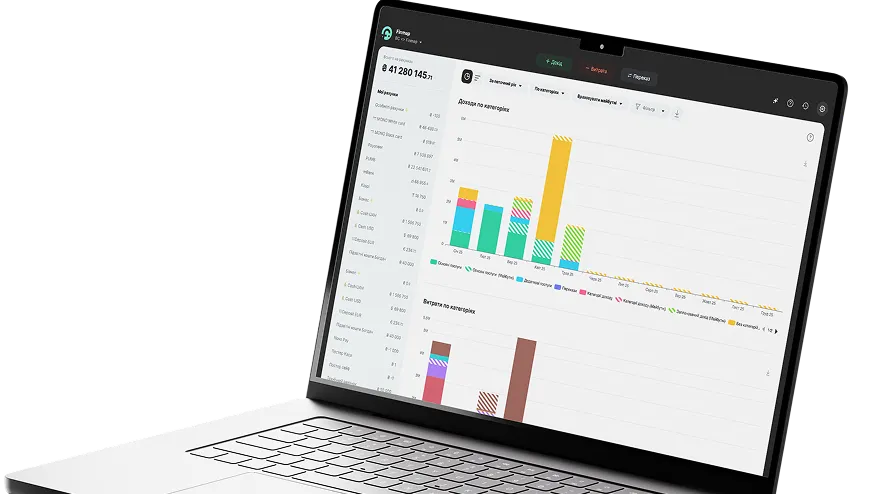Financial Results of the Year: How to Prepare and Analyse Reports
The beginning of the year is an opportunity to see the true picture of the business based on the results of the past period. What worked best? Where are the hidden reserves for growth? How can you prepare the financial foundation for a successful start to the new year?
In this article, we will explore how to summarize the financial results of the year without missing any important details and how to prepare for planning the upcoming year.

How to Prepare Your Annual Financial Statements Without Any Hassle
Effective financial planning and summarisation helps businesses make informed decisions and avoid mistakes. Follow these tips to make the annual reporting process more accurate and convenient.
- Summarize the annual results at the beginning of January, not at the end of the calendar year. This way, you can collect and systematize all the data related to the past period, even if payments were delayed.
- Implement regular monitoring of the financial situation to minimize the risk of unexpected results at the end of the reporting period.
- Use specialized financial tools throughout the year to collect and store data in a unified system.
Key Metrics for Assessing the Financial Health of a Business
Financial analysis is the foundation of effective business management. To make the right decisions, it is important not just to record income and expenses but also to evaluate key indicators, track their dynamics, and identify patterns.
This will help uncover the strengths and weaknesses of the business, optimize costs, and improve financial results. Let’s explore which indicators should be analyzed and how understanding them can enhance profitability and financial stability of the company.
- Sales Volume in Monetary Terms: This indicator should be analyzed by major product groups, services, and projects, comparing them with previous periods and analyzing the factors that influenced fluctuations.
- Net Cash Flow, according to the Cash Flow report, shows the balance between the company's income and expenses on a monthly basis. Cash flow analysis helps identify periods with a negative balance and the sources to cover it, which is crucial for planning future financial flows.
- Total Business Profit for the Year is a key performance indicator that reflects the overall financial outcome of operations and allows an assessment of the change in results compared to the previous year.
- Profit Dynamics by Month serves as an indicator of business seasonality. If profit shows clear peaks or declines, it allows for adapting the financial strategy, optimizing costs, and adjusting marketing activity.
- Profit by Business Areas – projects, locations, sales points, product/service groups, etc. – helps identify the most profitable products and services, enabling more effective resource allocation and focus on promising directions.
- Margin by Key Areas and Projects reflects how much net profit each area or project generates after accounting for variable costs, which is critically important for strategic business management.


- Share of Key Expenses Relative to Sales allows you to assess the proportion of each expense item, determining their impact on the overall financial result and controlling the dynamics of changes. If the share of key expenses is constantly rising, it signals the need to review the cost strategy, especially if sales are growing more slowly.
- Business Profitability for the Year is a relative profitability indicator used for comparison with market averages. When compared to last year’s data, it provides insight into whether operational efficiency is increasing.
- Financial Position of the Business: Analyzing assets and equity, as well as the ratio of working capital to current liabilities. This is determined based on the management balance sheet and helps to identify changes in the structure of assets and liabilities, as well as assess the company’s ability to meet obligations and the effectiveness of profit utilization.
- Additional key indicators for your business may include: ROI, LTV, MRR, Break-even Point, Unit Economics, etc.
Regularly assessing key indicators allows you to control the financial situation and identify hidden opportunities for growth. A strong business is built not on assumptions, but on accurate data.
Therefore, it is important not just to look at the numbers, but to understand their meaning, learn to forecast risks, and act proactively. Those who systematically analyze their finances achieve stability and a competitive advantage, which ultimately determines the company’s future.
Benefits of Annual Analysis for the Financial Health of the Company
Annual analysis is not only an assessment of the company’s performance but also an important tool for strategic planning, allowing you to:
- Adjust current business processes.
If throughout the year the company faced issues such as a lack of working capital, failure to account for seasonality, or a slowdown in sales, it signals the need for changes.
- Conduct a deep analysis of the company's financial position.
It is important to focus on the ratio of working capital to current liabilities to avoid cash flow gaps. Profitability and margin indicators should be used to assess the effectiveness of resource utilization.
- Make decisions regarding key business areas.
Annual analysis helps identify the most profitable projects and assess the costs of supporting unprofitable ones, as well as their impact on overall financial performance. Based on the report, insights can be gained on alternative monetization strategies or the reformatting of unprofitable assets.
Predefine the break-even point for each business area to keep track of the indicators throughout the year.
- Develop a growth strategy adapted to the real market conditions.
Use the data collected to compare with market averages and adjust the strategy to external changes. Market shifts may require adjustments to pricing policies or product assortments.
How Annual Analysis Helps in Making Strategic Decisions
Assess possible business development scenarios based on financial data and prepare flexible strategies for different economic conditions (growth, recession, changes in demand).
Annual reporting is also one of the key foundations for building a financial model for the business, which in turn helps to find answers to questions such as:
- How to predictably and steadily earn more;
- How to keep the business above the break-even point;
- Is it profitable to open a new business direction;
- How to prevent crisis situations.
Thus, compiling annual reports helps analyze business performance and make informed management decisions regarding future development. It’s important to note that you can quickly obtain accurate annual results only with a well-established systematic accounting process.
Finmap will help organize your finances and become your reliable support in the world of numbers. No more trouble with reporting!




.webp)




